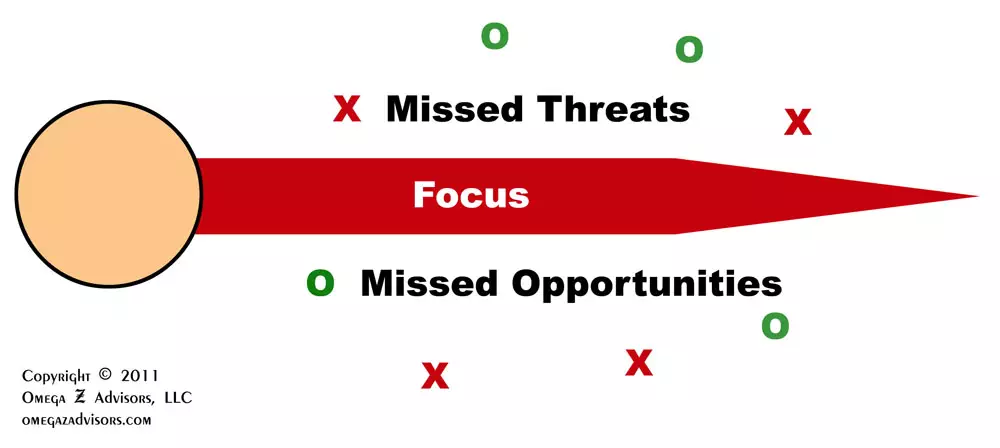Downside of Focus and Rise of Situational Awareness
 Classical business literature emphasizes focus: set goals, plan, and then focus on execution. However, it’s relatively void of focus’ downside: obliviousness to peripheral threats and opportunities.
Classical business literature emphasizes focus: set goals, plan, and then focus on execution. However, it’s relatively void of focus’ downside: obliviousness to peripheral threats and opportunities.
In the mid-1900’s, when conditions didn’t change as dynamically as today’s, extensive research, planning and focus worked. Today, most research is outdated upon completion. Consequently, situational awareness (SA) becomes more important as part of an adaptive business strategy.
SA is the degree to which a person or company can be aware of surrounding conditions while focused on a task or plan. Ironically, SA came of age with aerial combat; you need to know where you are in the sky while focused on engaging enemy aircraft. If not, you could crash your plane from flying too low or from enemy fire simply because you were oblivious to those factors.
Context strongly influences our planning; however, if conditions forming that context are dynamically changing, that means our plan – the object of our focus – might become invalid by new threats and opportunities, and our focus and poor SA might cause us to overlook them. Psychological influences such as anchoring and optimistic planning will create additional pressures to keep us focused and ignorant.
These will also influence our assessment of talent by tending to make it too static and historical. Rather than basing it on people’s potential within new conditions, we will tend to base it on performances under old conditions. We will tend to believe that successes and failures transfer rather than assess actual skills and actual aptitudes within a new set of actual conditions. More simply, this is pigeonholing.
Technology and the internet strongly influence today’s dynamic conditions. Our focus shouldn’t blind us. SA will help us see the many threats, opportunities and talents that will influence our success.


Pingback : Indie Effort, Opportunities and Success | Leadership Matters